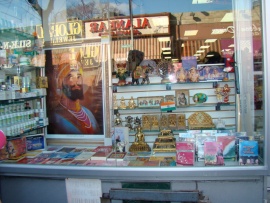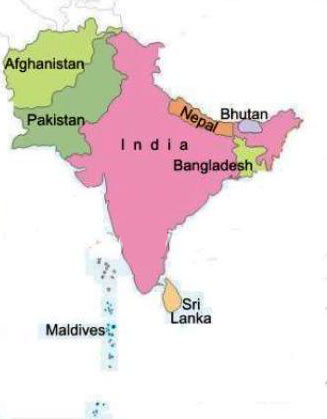From The Peopling of New York City
"If you’re in a group and someone different comes, of course you’re going to look and question them for a second. You’re going to have that little doubt." -Maya, Interview
"Yes, race is definitely a factor. I usually select only Indian, Pakistani, Bangladeshi or Nepali people. If the people don’t have the right skin color, and don’t know the language there will be no trust between the customer and the business. I personally believe that an African American, Hispanic or Caucasian individual will have a very difficult time conducting business in this area, and because of this, I usually rent my land to Indian, Pakistani, Bangladeshi or Nepali individuals." -Owner of Alankar Jewelers
Jackson Heights is an extremely diverse neighborhood of New York City. In it, we find a mostly South Asian shopping center, but its population varies greatly in ethnicity, religion, and culture. It contains Hindus, Muslims, Christians, Buddhists, Jains, Sikhs. Some nationalities present are Indians, Bangladeshis, Tibetans, Pakistanis, as well as many different Hispanic groups. Forces ranging from U.S immigration law to the economic attraction of relatively inexpensive housing and store rents, and cultural brotherhood have pushed these groups to settle there. The cultures of these various immigrant populations range tremendously and yet they all live and work in very close proximity. How do these different groups interact with each other? Do they mix with each other or do they prefer to remain separate? Are there religious or ethnic tensions among these different immigrants? Transnationalism, when immigrants have ties to where they came from as well as where they reside now, and culture contact are very common in the United States and especially in New York. It is interesting to see how this pertains to the South Asian immigrant population and to this unique mix of people in Queens. Ethnic tensions and differences are present, but not always easy to talk about or admit in public for fear of losing business or developing a bad reputation. Relations among different types of people also vary depending on religion, nationality, and especially personal traditions and family dynamics. It is therefore interesting to compare the different opinions on these relations, and find out what problems arise from these differences. Although parents take a big part in creating their childrens' beliefs, the exposure in public schools to many different ethnic identities has drastically changed culture contact in Jackson Heights. Can this small area of Queens be representative of culture contact throughout New York City? The issues of multicultural contact, the relationships between North and South India, religion in Jackson Heights, and South Asian youth culture shall be explored more in depth.
The Ethnic Perceptions of South Asian Youth
Many of the shopkeepers and first generation South Asian immigrants interviewed over this semester have described a distinction between the coethnics they consider fit to work for them and other minorities they feel are "untrustworthy." This decision was based largely on word of mouth descriptions of other minorities from coethnic business owners who have some experience and bias themselves. However, the youth among South Asian Americans have developed their own conceptions about other ethnic identities. Their everyday lives in public and private schools allow them to interact with many ethnic groups and see for themselves their work ethic, behavior, and interactions. This allowance has provided a possible route for the breakdown of these minority preconceptions brought on by their parents. In Jackson Heights. the South Asian youth are helping create a shopping area where ethnicity is becoming less and less of a factor and culture contact norms are being broken down to reveal more accepting interactions.


